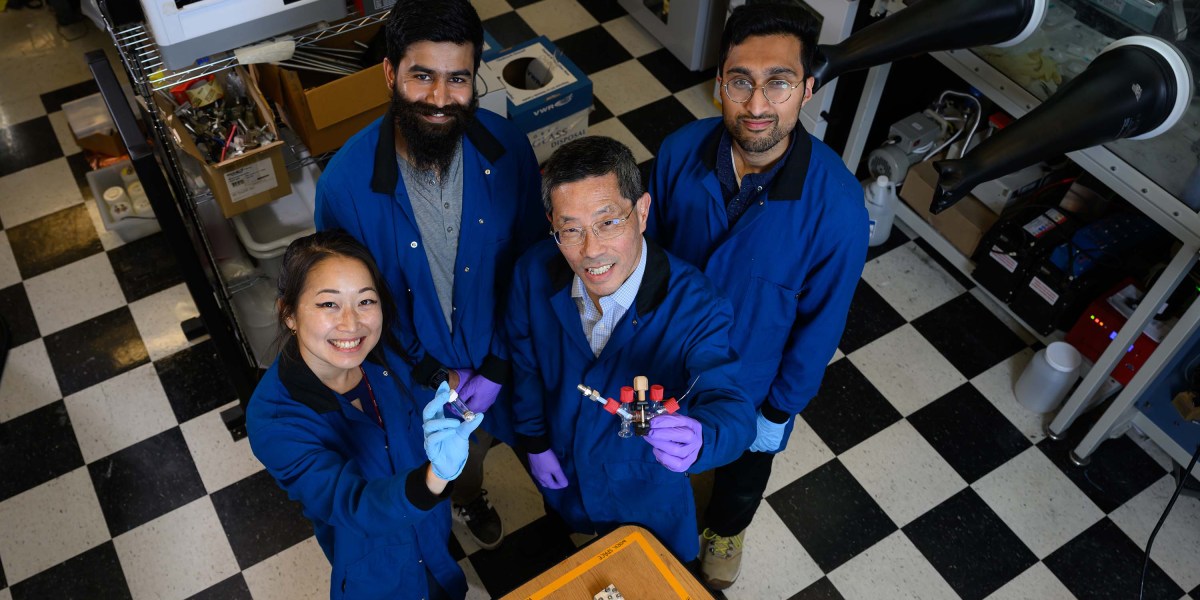“It’s an interesting cell concept,” says Jürgen Janek, a professor at the Institute of Physical Chemistry at the University of Giessen in Germany, who was not involved in the research. There’s been previous research on sodium-air batteries in the past, Janek says, but using this sort of chemistry in a fuel cell instead is new.
“One of the critical issues with this type of cell concept is the safety issue,” Janek says. Sodium metal reacts very strongly with water. (You may have seen videos where blocks of sodium metal get thrown into a lake, to dramatic effect). Asked about this issue, Chiang says the design of the cell ensures that water produced during reactions is continuously removed, so there’s not enough around to fuel harmful reactions. The solid electrolyte, a ceramic material, also helps prevent reactions between water and sodium, Chiang adds.
Another question is what happens to one of the cell’s products, sodium hydroxide. Commonly known as lye, it’s an industrial chemical, used in products like liquid drain-cleaning solution. One of the researchers’ suggestions is to dilute the product and release it into the atmosphere or ocean, where it would react with carbon dioxide, capturing it in a stable form and preventing it from contributing to global warming. There are groups pursuing field trials using this exact chemical for ocean-based carbon removal, though some have been met with controversy. The researchers also laid out the potential for a closed system, where the chemical could be collected and sold as a by-product.
There are economic factors working in favor of sodium-based systems, though it would take some work to build up the necessary supply chains. Today, sodium metal isn’t produced at very high volumes. However, it can be made from sodium chloride (table salt), which is incredibly cheap. And it was produced more abundantly in the past, since it was used in the process of making leaded gasoline. So there’s a precedent for a larger supply chain, and it’s possible that scaling up production of sodium metal would make it cheap enough to use in fuel cell systems, Chiang says.
Chiang has cofounded a company called Propel Aero to commercialize the research. The project received funding from ARPA-E’s Propel-1K program, which aims to develop new forms of high-power energy storage for aircraft, trains, and ships.
The next step is to continue research to improve the cells’ performance and energy density, and to start designing small-scale systems. One potential early application is drones. “We’d like to make something fly within the next year,” Chiang says.
“If people don’t find it crazy, I’ll be rather disappointed,” Chiang says. “Because if an idea doesn’t sound crazy at the beginning, it probably isn’t as revolutionary as you think. Fortunately, most people think I’m crazy on this one.”

